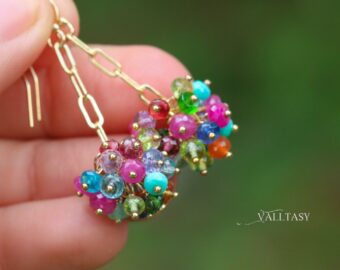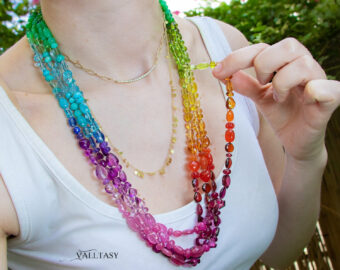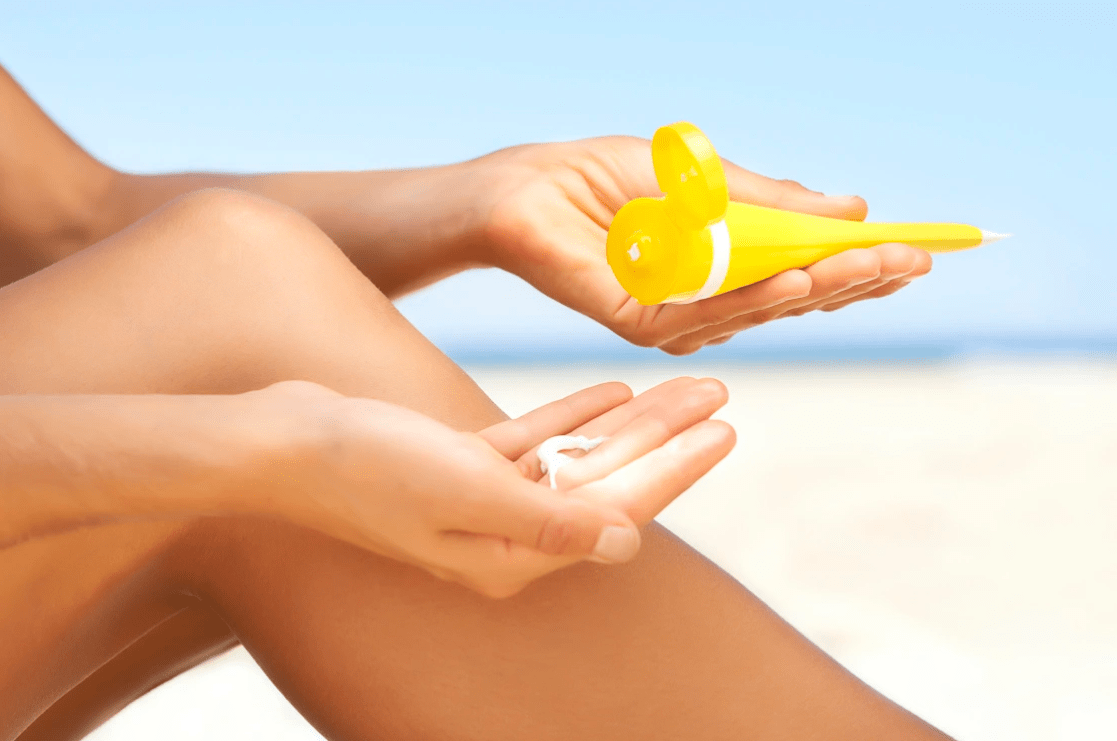No items in the cart
Blog
So what NOT TO DO with your Jewelry?
Last we talked about certain types of Jewelry that you can shower with (like 14K Solid Gold wire wrapped jewelry, which is fully made of gold and therefore fine with getting wet in a clear water).
Today I’d like to share 3 short but very important NO’s for any Jewelry in the Summer.
Let’s dive in! 🙂
Pools sea, ocean
Ahh…. summer, my favorite season! I love swimming and adore spending time in the water!
But lets remember:
Chlorine and saltwater can be harsh for any metal and gemstones. It’s very important to remove your jewelry before swimming in a pool or in the ocean.
Saltwater Corrosion: Sea and ocean water contains high levels of salt, which can accelerate the corrosion and tarnishing of metals. The salt can cause the metal to become dull, discolored, or pitted over time.
Chlorine Exposure: Most swimming pools are treated with chlorine or other chemicals to maintain water quality and kill bacteria. Chlorine can react with metals commonly used in jewelry, such as gold, silver, and copper, leading to chemical reactions that can discolor or tarnish the jewelry. This can result in the jewelry losing its shine and luster.
Chemical Residues: In addition to chlorine, pool water can contain other chemicals, such as chlorine stabilizers, algaecides, and pH balancers. These chemicals can leave residues on jewelry when it comes into contact with the water.
- Abrasion: Sand and other abrasive particles present in seawater can scratch or abrade the surface of jewelry, especially gemstones and softer metals like gold. This can lead to visible damage and a loss of luster.
Loss and Damage Risk: Wearing jewelry in the sea, ocean or pool increases the risk of losing it due to the slipperiness of water and the potential for waves to dislodge items. Additionally, jewelry can get tangled in underwater vegetation or rocks, leading to breakage or loss.
Outdoor activities
Yes, that’s me back in 2013 in Switzerland. Wonderful hiking, but indeed no gemstone jewelry on 🙂
While it’s very tempting to wear your favorite pieces during outdoor activities, such as intense sports or hiking, I recommend to remove them to prevent damage or loss. Physical activities can increase the risk of your jewelry getting snagged, scratched or broken.
Safety Concerns: Hiking involves physical activity and can be rugged and challenging, depending on the terrain and the difficulty of the hike. Wearing jewelry, especially pieces with protruding elements like rings, bracelets, or necklaces, can increase the risk of injury. Jewelry can get caught on branches, rocks, or other obstacles, potentially leading to cuts, bruises, or even more serious injuries.
Loss Risk: Hiking often takes place in outdoor environments where it’s easy to lose small items. Jewelry, such as rings or earrings, can easily slip off and become lost, especially if you’re adjusting your clothing or gear along the trail. Losing valuable jewelry while hiking can be disappointing and costly.
SPF sun creams and jewelry
It’s important to use SPF creams all day long when you’re outside and even not only in the summer, but all year long (seriously, it’s so important).
But, when applying sun cream, please wait 30 minutes before wearing your gemstone jewelry! Allow the creams to dry out and then put your jewelry on.
Sunscreen, lotions, and oils can leave residue on your jewelry, making it appear dull or cloudy. Additionally, these substances can also cause damage to certain gemstones and metals.
Residue Buildup: Sunscreen and SPF creams can leave residues on the skin and jewelry. These residues may contain chemicals, minerals, or oils that can adhere to your jewelry, potentially affecting its appearance and shine over time. This can be more noticeable on pieces with intricate designs or porous gemstones (especially Opals, Corals and Pearls!).
Chemical Reactions: Some ingredients in sunscreen or SPF creams, such as avobenzone or oxybenzone, can react with certain metals used in jewelry, particularly silver and copper. This may result in tarnishing, discoloration, or chemical reactions that can damage the jewelry.
Discoloration: Over time, the combination of sunscreen residue and exposure to sunlight can contribute to tarnishing or discoloration of certain metals. This can alter the appearance of your jewelry and require more frequent cleaning and maintenance.
Gemstone Damage: Certain gemstones can be sensitive to prolonged exposure to sunscreen and sunlight. For instance, organic gemstones like pearls and corals can be particularly vulnerable to damage from chemical residues and UV radiation. They may lose their luster or even change color over time.
To minimize these risks and protect both your jewelry and your skin, consider the following tips:
Apply Sunscreen Before Jewelry: Apply sunscreen or SPF creams to your skin before putting on your jewelry. This can reduce the likelihood of sunscreen residues coming into contact with your jewelry.
Wait for Absorption: Allow the sunscreen to fully absorb into your skin before putting on your jewelry. This can help reduce the transfer of residues.
Choose Jewelry Wisely: Choose for jewelry pieces that are less likely to be affected by sunscreen, such as those made from stainless steel, titanium or solid gold. Avoid wearing jewelry with delicate designs or intricate patterns when you plan to use sunscreen.
Clean Jewelry Regularly: Clean your jewelry regularly using mild soap and water or a jewelry cleaning solution to remove sunscreen residues and maintain its appearance.
Rotate Jewelry: Consider rotating your jewelry pieces so that they are not constantly exposed to sunscreen and sunlight. This can help reduce the impact on specific items.
Protect Gemstones: If you have jewelry with sensitive gemstones like pearls or corals, be particularly cautious and try to avoid exposing them to sunscreen or prolonged sunlight.















